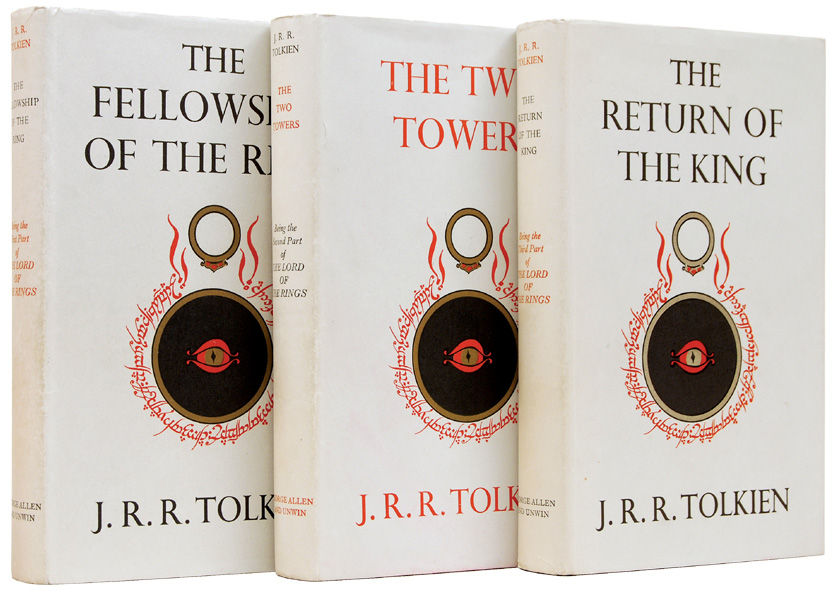


Tolkien carefully stained the artefact's materials, actually burning in the burn-marks and tearing the paper to make it as authentic as possible. Tolkien worked on making realistic artefacts to accompany his writing he spent enormous effort on a facsimile Book of Mazarbul to resemble the burnt, torn volume abandoned at the tomb of the Dwarf-leader Balin in the subterranean realm of Moria in the story, the wizard Gandalf finds the book and struggles to read out a substantial amount of the damaged text. The publishers declined to include a reproduction of the artefact in the first edition of The Lord of the Rings. The first page from The Book of Mazarbul, in the form of a facsimile artefact created by Tolkien to support the story and bring readers into his fantasy. The Lord of the Rings The Book of Mazarbul The American edition had in addition four of his watercolour paintings. The American edition replaced the frontispiece with Tolkien's full-colour watercolour painting of the same scene this was then used in later impressions in England also.

The old mill, based on the mill at Sarehole, and The Water are in the foreground, an idealised English countryside in the middle distance, and The Hill and Bilbo's home Bag End (tunnelled into The Hill) in the background. It depicts Bilbo Baggins's home village of Hobbiton in the Shire. In addition, it had as its frontispiece Tolkien's drawing The Hill: Hobbiton-across-the-Water. However, the first British edition of The Hobbit in 1937 was published with ten of his black-and-white drawings. Tolkien's illustrations contributed to the effectiveness of his writings, though much of his oeuvre remained unpublished in his lifetime. Watercolour painting The Hill: Hobbiton-across-the-Water used as the frontispiece of the first American edition of The Hobbit, 1938 Posthumously, collections of his artworks have been published, and academics have begun to evaluate him as an artist as well as an author. In his lifetime, some of his artworks were included in his novels The Hobbit and The Lord of the Rings others were used on the covers of different editions of these books. Some of his artworks combined several of these elements to support his fiction. Tolkien prepared illustrations for his Middle-earth fantasy books, facsimile artefacts, more or less "picturesque" maps, calligraphy, and sketches and paintings from life. Tolkien's artwork was a key element of his creativity from the time when he began to write fiction. In early editions it was printed in black on white rather than, as here and as Tolkien wished, in white on black. Despite his best efforts, this was the only drawing, other than maps and calligraphy, in the first edition of The Lord of the Rings. This Special Edition will be on display at stores until October 13, 2018.Tolkien's illustration of the Doors of Durin for The Fellowship of the Ring, with Sindarin inscription in Tengwar script, both being his inventions.
#The hobbit the lord of the rings editions by j.r.r. tolkien full#
This is a beautiful, high-quality, glossy 100-page issue full of articles, information on both books and films, and many full-page photos. Tolkien – Celebrating the Professor’s Greatest Creations is on newsstands and store check-out lanes now.


 0 kommentar(er)
0 kommentar(er)
